For a long time, worshiping on New Year’s Eve has been a traditional cultural ceremony of the Vietnamese people, to pray for a prosperous and happy new year for oneself and loved ones. Let’s explore the New Year’s Eve worship table on the 30th of Tet Giap Thin 2024 to see what it includes to wish for a lucky new year through our article!
1 The significance of worshiping on New Year’s Eve
 The significance of worshiping on New Year’s Eve
The significance of worshiping on New Year’s Eve
Worshiping on New Year’s Eve is a beautiful cultural ritual of the Vietnamese people on every Lunar New Year occasion. New Year’s Eve worship, also known as “Tru tich” in Vietnamese, means to “get rid of evil spirits, unlucky things from the old year.” Therefore, New Year’s Eve worship is always performed from around 11 PM to 1 AM at the moment of transition between the old and the new year.
2 Outdoor New Year’s Eve worship table on the 30th of Tet
Depending on each region, the New Year’s Eve worship table on the 30th of Tet will vary, but there are common characteristics that must include “fruit,” “betel and areca nut,” “tea,” “candles,” “incense,” “clothes and hats of the deities.” For the salty worship table, there must be “boiled chicken” or “boiled duck,” “pickled onions,” “flowers,” etc. If you are a Buddhist, you can worship the vegetarian worship table and offering fruits.
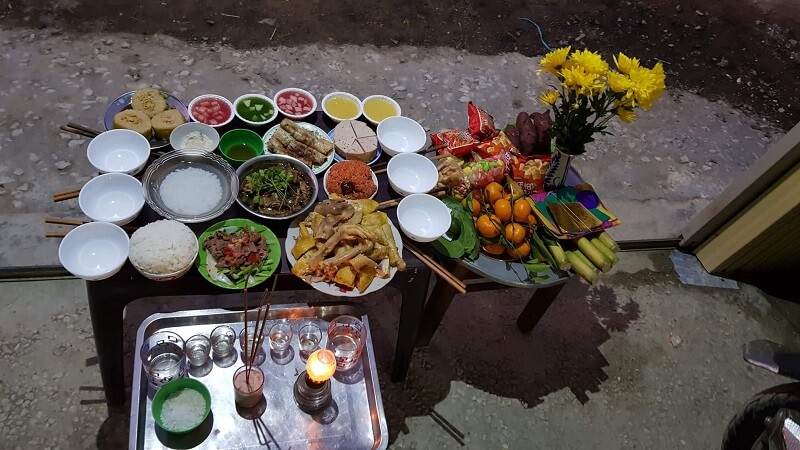 The worship table should be placed in front of the house, absolutely not inside the house or balcony.
The worship table should be placed in front of the house, absolutely not inside the house or balcony.
The worship table should be placed in front of the house, absolutely not inside the house or balcony. At the right time, the host should dress neatly, light the lamps, candles, pour wine, pour tea, then kneel and bow in front of the altar, sincerely invite the deities and ancestors, and worship them according to the family’s wishes, allowing the deceased relatives to come back home and enjoy the offerings, welcoming the new year with the descendants.
3 Indoor New Year’s Eve worship table on the 30th of Tet
In addition to the outdoor worship table, the host also needs to prepare an indoor New Year’s Eve worship table including “five fruits,” “candles,” “incense,” “flowers,” “gold bars,” “betel and areca nut,” “wine,” “tea,” “chung cake,” etc.
 The indoor New Year’s Eve worship table is the worship of ancestors.
The indoor New Year’s Eve worship table is the worship of ancestors.
Actually, the indoor New Year’s Eve worship table is the worship of ancestors, inviting ancestors to come home and celebrate the new year with their descendants, respecting the beliefs of the Vietnamese and Chinese people, and at the same time, the worship table is a gratitude to the ancestors for accompanying, protecting and blessing the descendants to have a successful year.
Usually, the indoor worship table will be made after the outdoor worship table, in a ritual called “greeting the new year, bidding farewell to the old year”, which means inviting deities and new officials to the house and bidding farewell to the old officials.
4 New Year’s Eve worship table in different regions
South Region New Year’s Eve worship table
Due to the hot weather in the South, the preparation of the New Year’s Eve worship table for people in the South usually prioritizes cold dishes such as pickled onions, pickled vegetables, etc.
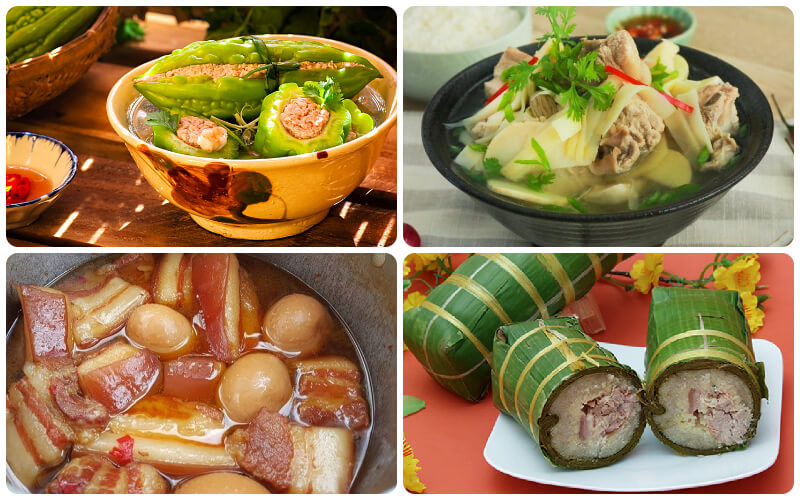 South Region New Year’s Eve worship table
South Region New Year’s Eve worship table
Central Region New Year’s Eve worship table
The Central Region New Year’s Eve worship table will also have its own characteristics, reflected through traditional dishes that represent the characteristics of the Central Region, such as “dish of nem lui,” “dish of banh bot loc,” “dish of meat rolls,” dish of “ram meat,” etc.
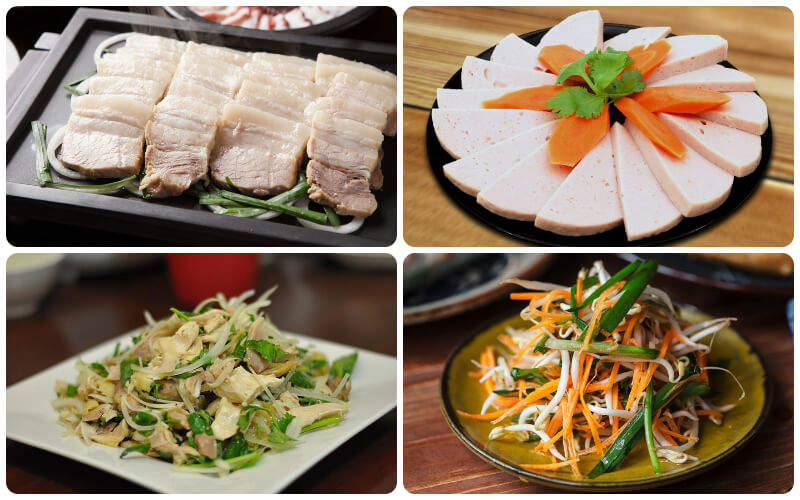 The Central Region New Year’s Eve worship table will also have its own characteristics
The Central Region New Year’s Eve worship table will also have its own characteristics
Northern Region New Year’s Eve worship table
The Northern Region New Year’s Eve worship table consists mainly of traditional dishes, usually including 4 bowls, 4 plates. If it’s a grand feast or a family with financial means, it will include 6 bowls, 6 plates or 8 bowls, 9 plates of worship dishes including “chicken bowl,” “steamed sticky rice with mixed fillings,” “pork bowl,” “chung cake,” etc.
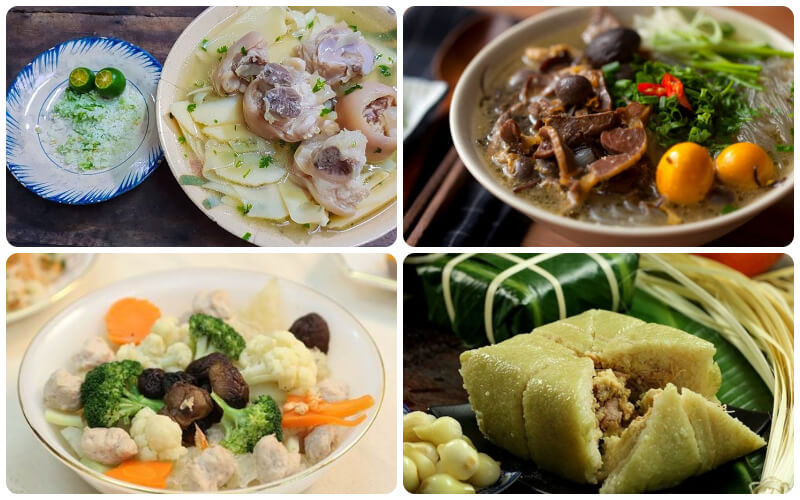 The Northern Region New Year’s Eve worship table consists mainly of traditional dishes
The Northern Region New Year’s Eve worship table consists mainly of traditional dishes
5 Related questions
Does the New Year’s Eve worship table need to include vegetarian dishes?
The New Year’s Eve worship table does not require excessive decoration and does not require salted dishes, so it can include vegetarian dishes. The New Year’s Eve worship table with vegetarian food can also show cleanliness, sincerity, and purity inside. Thus, the vegetarian worship table is simple but it is a way to quickly receive luck, which is encouraged by many feng shui practitioners.
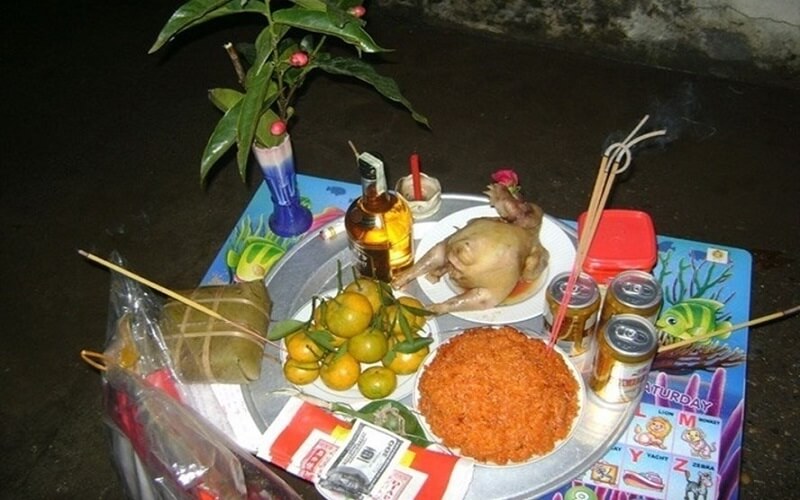 The New Year’s Eve worship table does not require excessive decoration and does not require salted dishes
The New Year’s Eve worship table does not require excessive decoration and does not require salted dishes
However, offering the worship table with salty dishes is still accepted by the deities, because when worshiping, it is not only worshipping the Buddha but also worshipping other deities, so any way of worship is good, the main thing is the intention of the worshipper, whether the worship method is correct, solemn or not.
Where should the New Year’s Eve worship table be placed?
A proper New Year’s Eve worship table includes both indoor and outdoor arrangements. The worship table outside, as explained above, is the worship of deities and ancestors, including 12 officials called “Han Khiem” in Vietnamese folklore.
 A proper New Year’s Eve worship table includes both indoor and outdoor arrangements
A proper New Year’s Eve worship table includes both indoor and outdoor arrangements
Each year will have a different alternating official, so laying the worship table outside is to welcome the new officials to the house and ask the ancestors for permission to enter the house in the new year to celebrate the New Year with their descendants. In addition, the worship table inside will worship the ancestors and make offerings to the old official.
Should the New Year’s Eve worship table include rice and salt?
Rice and salt are indispensable in any worship ceremony in the folklore, originating from Daoism as they represent positive things, harmonious elements, and have the ability to ward off evil spirits and bad luck. On New Year’s Eve, in addition to deities, there are also many evil spirits surrounding, so after worshiping, the host will sprinkle rice and salt around to invite these spirits to stay away from their homes after enjoying the offerings.
At the same time, they also symbolize the desire for the family to have prosperity and wealth throughout the year, indicating an abundant year of fortune for the family.
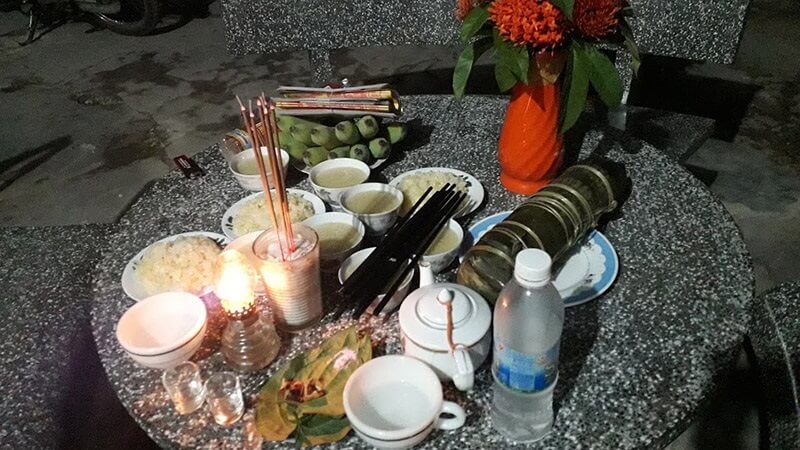 Rice and salt are indispensable in any worship ceremony in the folklore
Rice and salt are indispensable in any worship ceremony in the folklore
Above are the ways to arrange the New Year’s Eve worship table in different regions of the country, the methods of worshiping and the significance of worshiping on New Year’s Eve in the spiritual life of the Vietnamese people. Hopefully, this article can provide you with more useful and interesting information.

































